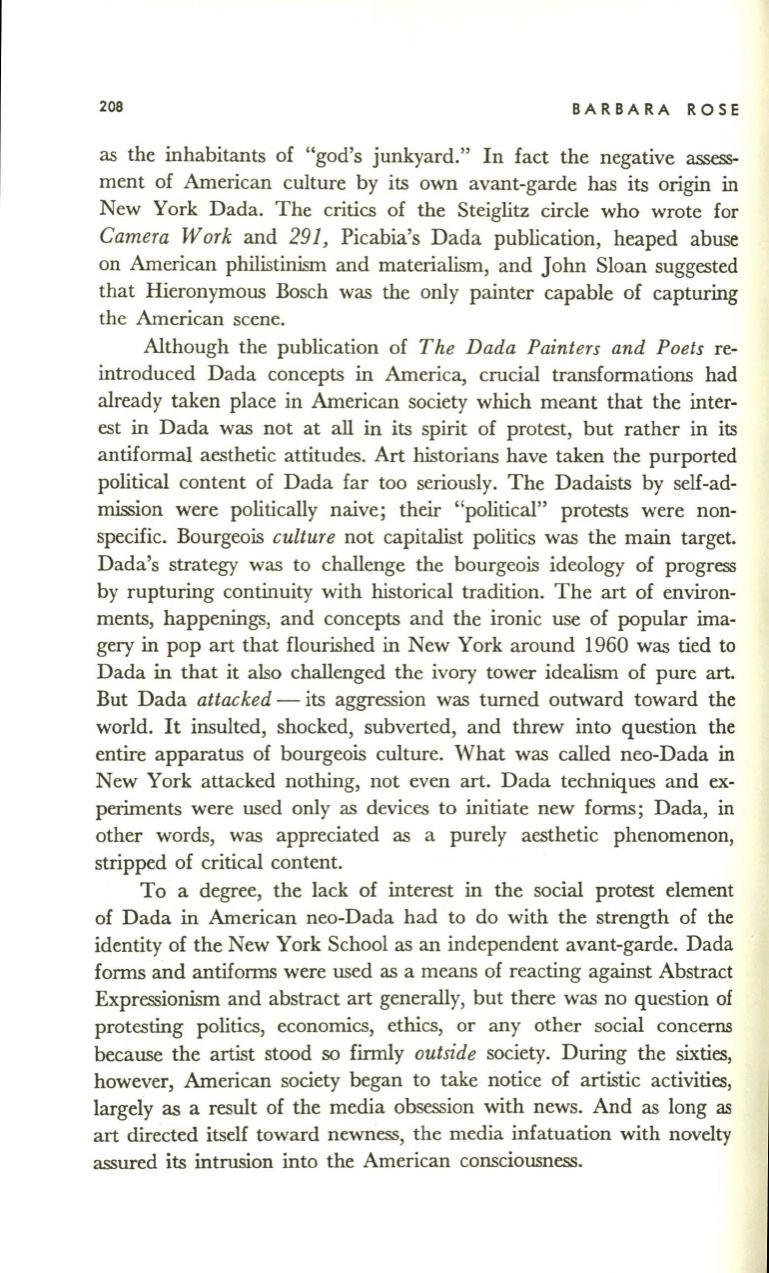
208
BARBARA ROSE
as the inhabitants of "god's junkyard." In fact the negative
assess–
ment of American culture by its own avant-garde has its origin in
New York Dada. The critics of the Steiglitz circle who wrote for
Camera Work
and 291, Picabia's Dada publication, heaped abuse
on American philistinism and materialism, and John Sloan suggested
that Hieronymous Bosch was the only painter capable of capturing
the American scene.
Although the publication of
The Dada Painters and Poets
re–
introduced Dada concepts in America, crucial transformations had
already taken place in American society which meant that the inter–
est in Dada was not at all in its spirit of protest, but rather in its
antiformal aesthetic attitudes. Art historians have taken the purported
political content of Dada far too seriously. The Dadaists by self-ad–
mission were politically naive; their "political" protests were non–
specific. Bourgeois
culture
not capitalist politics was the main target.
Dada's strategy was to challenge the bourgeois ideology of progress
by rupturing continuity with historical tradition. The art of environ–
ments, happenings, and concepts and the ironic use of popular ima–
gery in pop art that flourished in New York around 1960 was tied to
Dada in that it also challenged the ivory tower idealism of pure art.
But Dada
attacked
-
its aggression was turned outward toward the
world.
It
insulted, shocked, subverted, and threw into question the
entire apparatus of bourgeois culture. What was called neo-Dada in
New York attacked nothing, not even art. Dada techniques and ex–
periments were used only as devices to initiate new forms; Dada, in
other words, was appreciated as a purely aesthetic phenomenon,
stripped of critical content.
To a degree, the lack of interest in the social protest element
of Dada in American neo-Dada had to do with the strength of the
identity of the New York School as an independent avant-garde. Dada
forms and antiforms were used as a means of reacting against Abstract
Expressionism and abstract art generally, but there was no question of
protesting politics, economics, ethics, or any other social concerns
because the artist stood so firmly
outside
society. During the sixties,
however, American society began to take notice of artistic activities,
largely as a result of the media obsession with news. And as long as
art directed itself toward newness, the media infatuation with novelty
assured its intrusion into the American consciousness.


